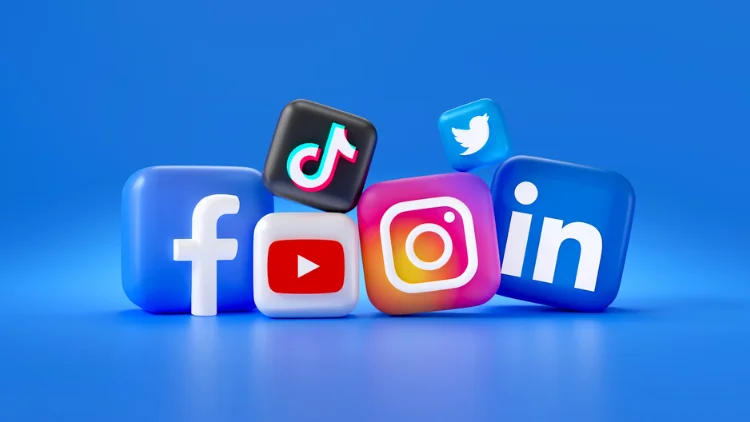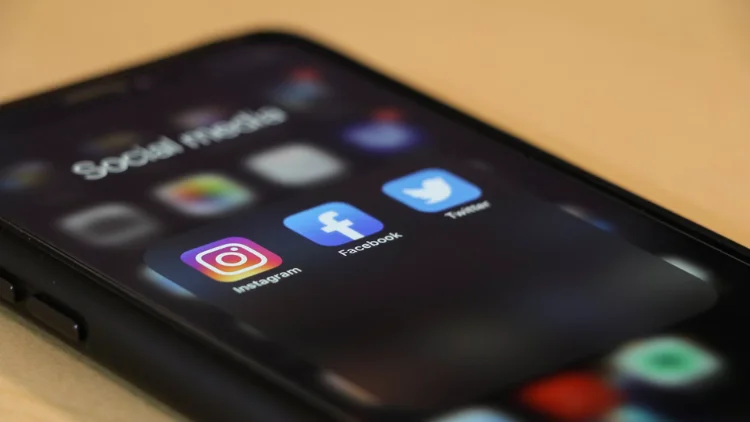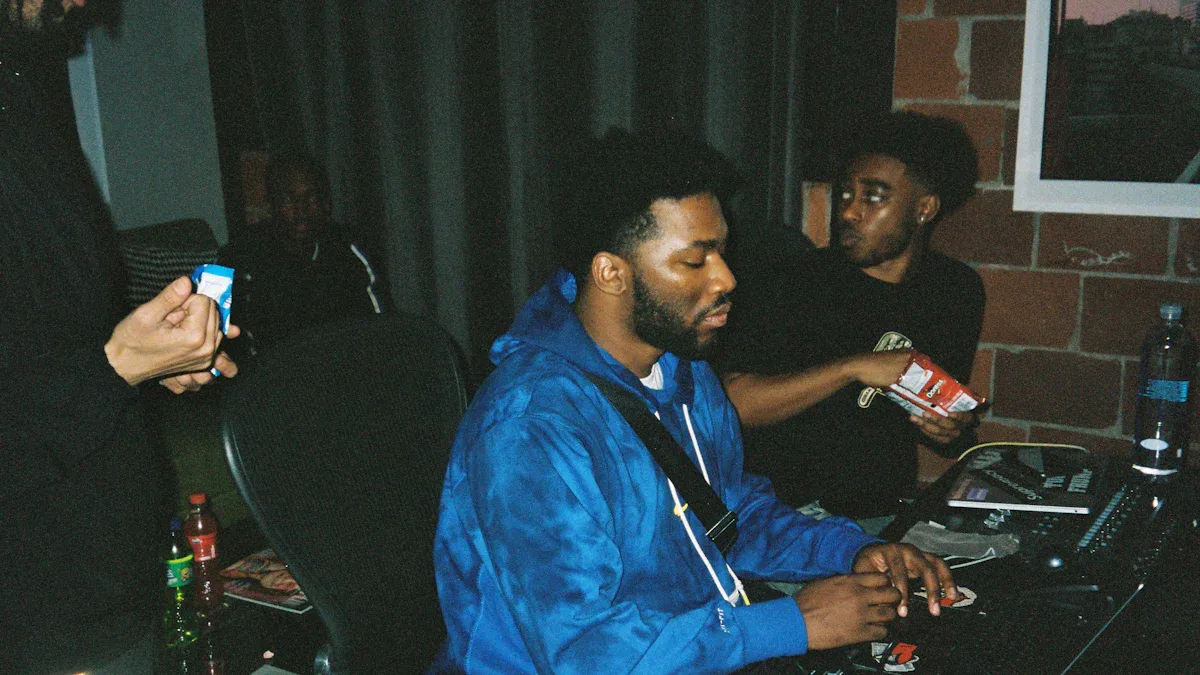In today’s digital landscape, those who get the chance to publish content on major social media platforms have the opportunity to become popular and even profitable. But to build a sustainable career, it is necessary to understand which platforms pay the most, how their monetization models work, and what strategies can help you maximize your income.
Which Social Media Platforms Support Monetization?
Let’s face it—not every social media platform is built with creators in mind. While some are perfect for sharing memes or staying in touch with friends, others have gone the extra mile to help creators turn their passion into profit. If you’re serious about making money online, it’s worth knowing which platforms actually put cash in your pocket. Here’s a closer look at the major players and how they support monetization:

YouTube
If there’s one platform that’s practically synonymous with creator monetization, it’s YouTube. From ad revenue sharing to fan-funded Super Chats and even merchandise integration. It’s no wonder so many people call it the “gold standard” for earning money online.
TikTok
Love it or hate it, TikTok has become a powerhouse for short-form video creators. Through the TikTok Creator Fund, LIVE gifts, and brand partnerships, it’s possible to turn viral moments into real income. Sure, the payouts might not be as high as YouTube’s (yet), but the platform’s ability to catapult creators into the spotlight is unmatched.
For influencers and businesses alike, Instagram is a go-to platform for monetization. Whether it’s through Reels bonuses, branded content deals, or affiliate marketing, Instagram offers plenty of ways to cash in on your creativity. Plus, its visual-first approach makes it ideal for creators who thrive on aesthetics and storytelling.
For Instagram content creators:
How to get more followers on Instagram
What are Instagram Broadcast Channels
While it might not be the trendiest platform these days, Facebook still has a lot to offer creators. Features like ad breaks, fan subscriptions, and virtual gifts (stars) provide multiple streams of income. It’s especially useful if you already have an engaged community on the platform.
Twitter (X)
Twitter’s monetization tools are still a work in progress, but they’re worth keeping an eye on. Premium users can earn through ad revenue sharing, and the tipping feature lets your most loyal followers support you directly. It’s not the most lucrative option yet, but it’s a start.
Twitch
If you’re a gamer or live streamer, Twitch is where it’s at. Subscriptions, bits (virtual currency), and ad revenue make it a solid choice for anyone who loves real-time interaction with their audience. The platform’s community-driven vibe is a big part of its appeal.
Of course, each platform has its own rules and requirements—like minimum follower counts or watch hours—so it’s important to do your homework before diving in. But with the right strategy and a bit of persistence, there’s no limit to what you can achieve.
How Much Do Different Social Platforms Pay Creators?
The amount creators earn varies significantly by platform, content type, and audience engagement. Here’s a breakdown of average earnings:
YouTube
On average, creators earn 3 to 5 per 1,000 views (CPM), depending on niche and audience demographics. Top creators can earn millions annually through ads, sponsorships, and merchandise.
TikTok
The TikTok Creator Fund pays approximately 0.02to0.04 per 1,000 views, but most creators rely on brand deals and LIVE gifts for higher earnings.
Reel bonuses can pay up to 1,000 per 1 million views, while brand partnership soft yields 1,000 per 1 million views, and brand partnership soft yields 500 to $5,000 per post, depending on follower count.
Twitch
Streamers earn roughly $2.50 per 1,000 ad views, but the majority of their income comes from subscriptions and donations.
Ad breaks pay around 1 to 2 per 1,000 views, while fan subscriptions and stars provide additional revenue streams.
These figures highlight the importance of diversifying income sources beyond ad revenue alone.

Which Social Media Platform Pays the Most for Views?
When it comes to paying creators for views, YouTube stands out as the clear leader. With its well-established ad revenue sharing model, YouTube offers higher CPM rates compared to other platforms. For example, a tech or finance channel might earn 10 to 20 per 1,000 views due to higher advertiser demand in these niches. In contrast, TikTok’s Creator Fund pays significantly less, making it more challenging to earn substantial income solely from views.
However, TikTok’s strength lies in its viral potential and ability to attract brand deals, which can often outweigh the lower CPM rates.
Who Pays More, TikTok or YouTube?
The answer depends on how you define “paying more.”
YouTube offers higher direct earnings from ad revenue, making it ideal for creators who prioritize consistent, long-term income.
Read more: How do you know if a song is copyrighted on YouTube
TikTok, while offering lower direct payouts, excels in viral reach and brand partnership opportunities. Creators with engaging content and a strong personal brand can secure lucrative deals with companies looking to tap into TikTok’s massive user base.
Ultimately, YouTube is better for creators focused on ad revenue, while TikTok is ideal for those who can leverage their influence for brand collaborations.
Which Platform is Best for Earning Money?
The “best” platform for earning money depends on your content style, audience, and goals:
- YouTube: Best for long-form content creators who can consistently produce high-quality videos.
- TikTok: Ideal for short-form video creators with a knack for viral trends and engaging storytelling.
- Instagram: Perfect for visual content creators and influencers who can attract brand partnerships.
- Twitch: Great for gamers and live streamers who can build a loyal community.
Diversifying across multiple platforms can also help maximize your earning potential and reduce reliance on a single income source.
How to Make Money in Content Creation?
Here are proven strategies to monetize your content effectively:
Ad Revenue: Platforms like YouTube and Facebook allow creators to earn a share of ad revenue generated from their content.
Brand Partnerships: Collaborate with brands to create sponsored content or promote products.
Fan Support: Use features like Patreon, memberships, or tipping to let your audience support you directly.
Merchandise and Products: Sell branded merchandise, digital products, or courses related to your niche.
Affiliate Marketing: Earn commissions by promoting third-party products or services.
Success in content creation requires consistency, authenticity, and a deep understanding of your audience’s preferences.
What Social Media Can You Make the Most Money?
As of now, YouTube remains the top platform for earning money due to its high CPM rates and diverse monetization options. However, TikTok is rapidly closing the gap, especially for creators who excel at viral content and brand collaborations.
Looking ahead to 2025, platforms like Instagram and TikTok are expected to expand their monetization features, potentially offering even more opportunities for creators. The key to maximizing earnings will be staying adaptable and leveraging multiple income streams across different platforms.

FAQ
What Social Media Do Rich People Use?
Wealthy individuals tend to use social media platforms that align with their personal and professional interests. According to a survey by SEI:
- 50% of high-net-worth individuals (with over $5 million in investible assets) use Facebook.
- 37% visit YouTube, while 35% are active on LinkedIn.
These platforms cater to different needs: Facebook for personal connections, YouTube for entertainment and education, and LinkedIn for professional networking. While wealthy individuals may use social media less frequently than the general population, they prioritize platforms that offer value, whether for leisure, learning, or business growth.
Which Social Media is Most Successful?
Facebook is currently the most successful social media platform, with over 14 billion monthly website visits (excluding app usage). Owned by Meta, Facebook dominates the social media landscape due to its massive user base, diverse features, and robust advertising tools. Businesses and creators alike leverage Facebook to reach global audiences, build communities, and drive engagement. Its success lies in its ability to adapt to user needs, from personal networking to e-commerce integration.
Which Pays More, YouTube or Instagram?
The answer depends on how you monetize your content:
- YouTube pays creators directly through ad revenue, with average earnings of 3 to 5 per 1,000 views (CPM). However, income can vary significantly based on niche and audience demographics.
- Instagram often outperforms YouTube in terms of brand partnerships. A single sponsored post on Instagram can earn creators 500 to 5,000 or more, depending on follower count and engagement rates.
While YouTube offers consistent ad-based income, Instagram’s strength lies in its appeal to brands, particularly for short-form, visually-driven content like Reels. Many creators find that combining both platforms maximizes their earning potential.
Conclusion
The social media platform that can make you the most money depends on your content type, audience, and ability to adapt to trends. For content creators, the most important thing is to focus on producing content that you find interesting and meaningful because only content that you truly love can continue to attract viewers and build a loyal fan base.
Currently, YouTube is leading in direct revenue, mainly relying on advertising sharing and diverse monetization functions. However, TikTok and Instagram provide unique opportunities in virality and brand cooperation, especially for creators who are good at producing short-form, visual content.
In addition, whether it is YouTube, TikTok, or Instagram, high-quality music is an indispensable element in content creation. If you feel that using royalty-free music in your content is a reasonable choice, it will be a wise decision. Royalty-free music can not only avoid copyright disputes but also add professionalism and appeal to your videos, thereby improving the overall quality of the content.






